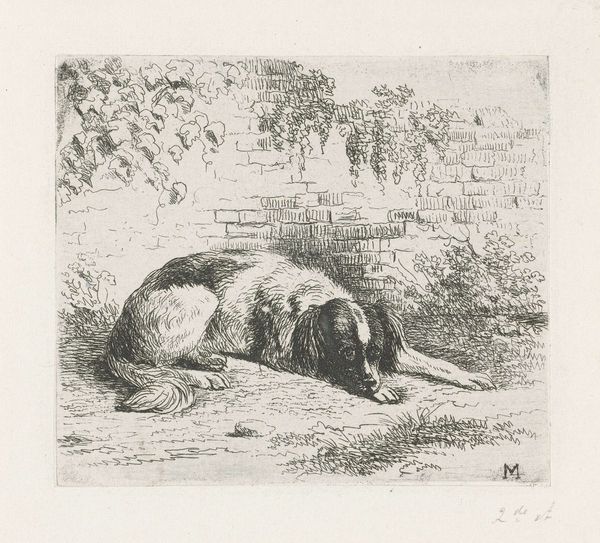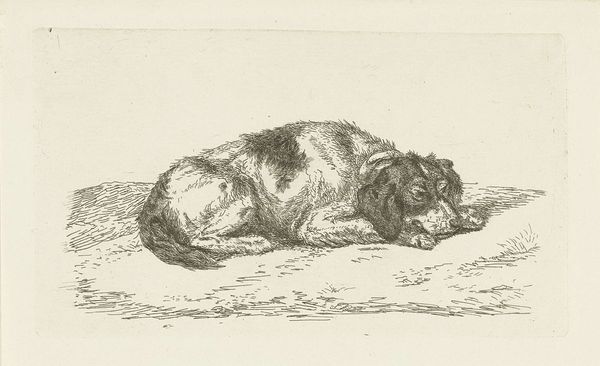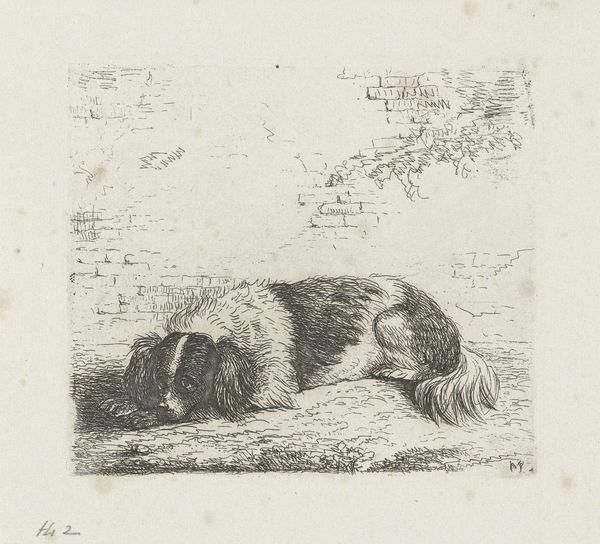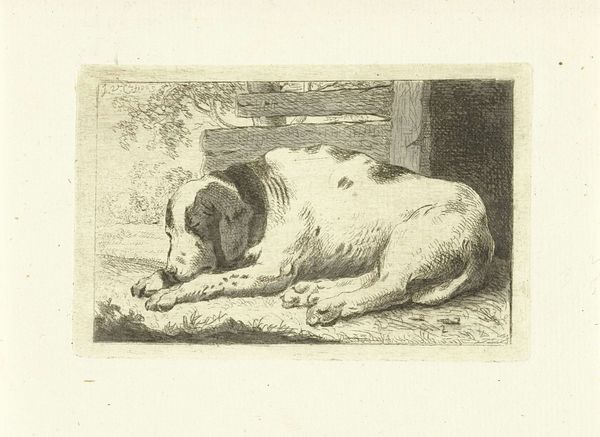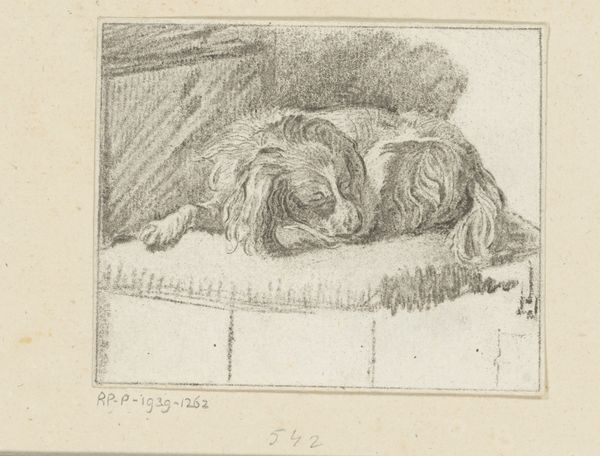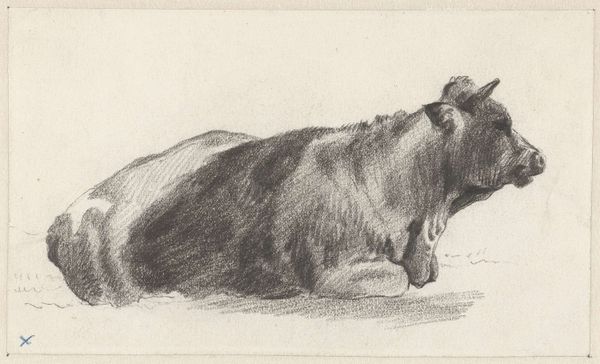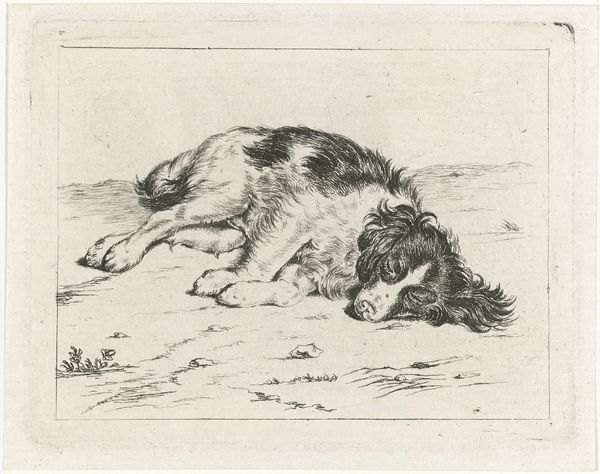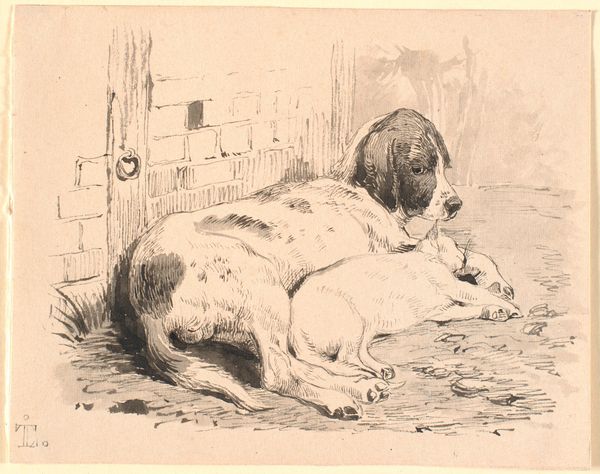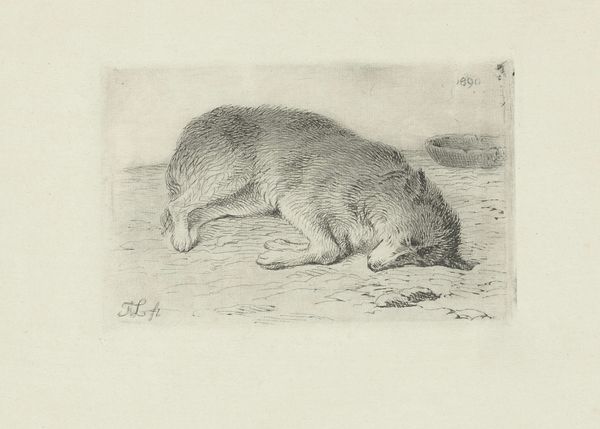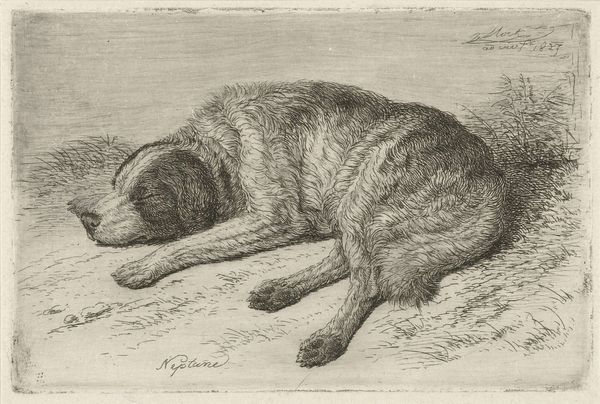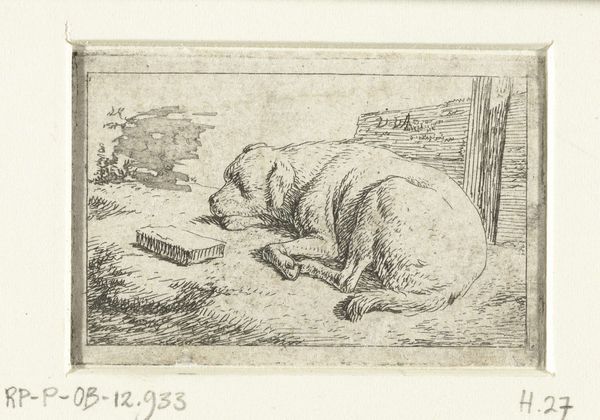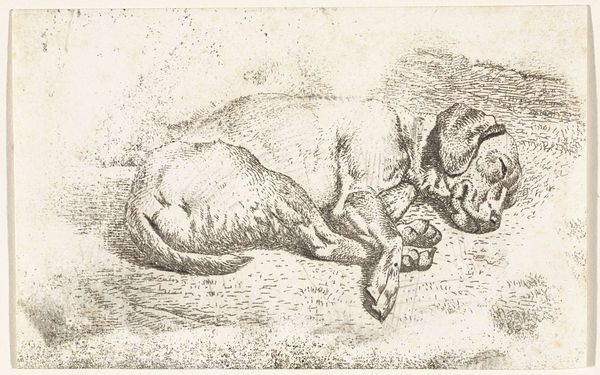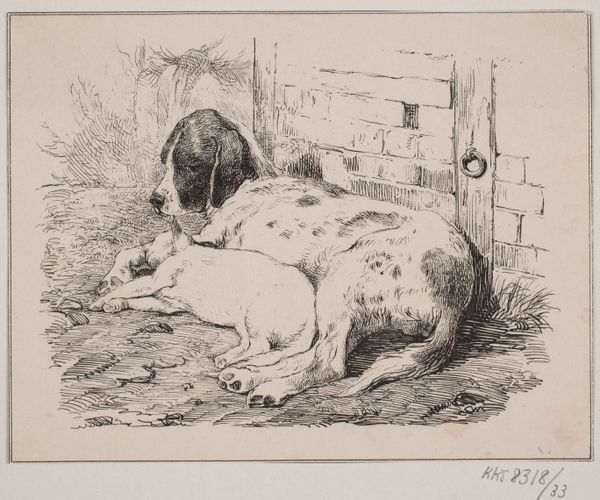
drawing, print, etching, engraving
#
portrait
#
drawing
#
animal
# print
#
etching
#
dog
#
landscape
#
figuration
#
line
#
genre-painting
#
engraving
#
realism
Dimensions: height 83 mm, width 95 mm
Copyright: Rijks Museum: Open Domain
Curator: Here we have "Liggende hond voor een muurtje," or "Lying Dog by a Small Wall," an etching by Christiaan Wilhelmus Moorrees. Although he was active between 1811 and 1867, the exact year this piece was made remains unknown. Editor: The texture really strikes me—it has a sketched, immediate quality, like a fleeting impression captured. There is a fragility to the image. Curator: Yes, that's characteristic of Moorrees's style. As a genre painting, it really reflects the emerging artistic interest in everyday subjects. One might see it as reflective of burgeoning bourgeoise society, with time and resources to reflect on our furry companions. Consider the parallel popularity of dog portraits amongst the aristocracy. Editor: Interesting point, Curator, it almost speaks to the sentimentalization of pets within a particular class structure. However, what do you think the dog itself communicates? There is something melancholic and almost weary in the dog's pose that complicates an idealized or simple view of bourgeois life. It has a touch of resignation to it, and even hints at labor and duty, as many animals during this period lived alongside and worked with humans. Curator: I agree, the gaze is almost pleading, perhaps a little desperate. The artist captures the personality and presence of the animal. Look at the careful attention to line creating the dog’s fur. One might consider this alongside broader shifts in the philosophical understandings of animals during the 19th Century. Darwin published "On the Origin of Species" in 1859—perhaps here we have Moorrees reflecting that change through art. Editor: And what is its social place, literally positioned between nature represented by that creeper and culture rendered by that wall? Curator: It certainly invites these kinds of interpretive frames. What seems at first glance like a cute genre painting becomes imbued with broader socio-cultural commentary and discourse around our relation to animals. Editor: It offers an invitation for critical discourse on class, labor, and human relationships to the non-human. A simple piece that invites significant contextual consideration.
Comments
No comments
Be the first to comment and join the conversation on the ultimate creative platform.
